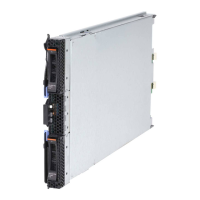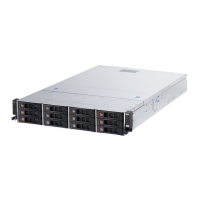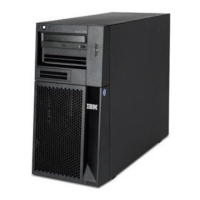v Light path diagnostics
Light path diagnostics provides light-emitting diodes (LEDs) to help you
diagnose problems. For more information, see Light path diagnosticsthe Problem
Determination and Service Guide.
v PCI Express
PCI Express is a serial interface that is used for chip-to-chip interconnect and
expansion adapter interconnect. With the blade expansion connector you can
add optional I/O and storage devices.
v Power throttling
Each blade server is powered by two Enterprise Voltage Regulator-Down
(EVRD) 12.0 voltage regulators. By enforcing a power policy known as
power-domain oversubscription, the BladeCenter unit can share the power load
between two power modules to ensure sufficient power for each device in the
BladeCenter unit. This policy is enforced when the initial power is applied to the
BladeCenter unit or when a blade server is inserted into the BladeCenter unit.
The following settings for this policy are available:
– Redundant without performance impact
– Redundant with performance impact
– Non-redundant
You can configure and monitor the power environment by using the Advanced
Management Module. For more information about configuring and using power
throttling, see the Advanced-Management-Module documentation or
http://www.ibm.com/supportportal/ .
Reliability, availability, and serviceability features
Reliability, availability, and serviceability features help to ensure the integrity of the
data that is stored in the blade server, the availability of the blade server when you
need it, and the ease with which you can diagnose and correct problems.
Three of the most important features in server design are reliability, availability,
and serviceability (RAS). These RAS features help to ensure the integrity of the
data that is stored in the blade server, the availability of the blade server when you
need it, and the ease with which you can diagnose and correct problems.
The blade server has the following RAS features:
v Advanced Configuration and Power Interface (ACPI)
v Automatic server restart (ASR)
v Built-in diagnostics using DSA Preboot, which is stored in integrated USB
memory
v Built-in monitoring for temperature, voltage, and hard disk drives
v Customer support center 24 hours per day, 7 days a week
1
v Customer upgrade of Flash ROM-resident code and diagnostics
v Customer-upgradeable Unified Extensible Firmware Interface (UEFI) code and
diagnostics
v ECC protected DDR3 memory
v ECC protection on the L2 cache
v Error codes and messages
v Hot-swap SAS storage drives
v Integrated Management Module (IMM)
v Light path diagnostics
1. Service availability will vary by country. Response time will vary depending on the number and nature of incoming calls.
8 BladeCenter HS23 Types 7875 and 1929: Installation and User's Guide

